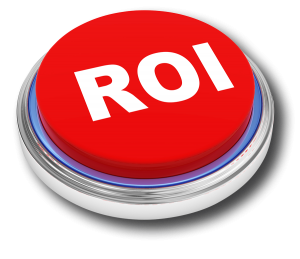Undervaluing Root Cause Analysis in Healthcare
Read an article this past week discussing a hospital system investing $55 million to implement an EHR platform to improve efficiency within their hospital system (15 counties across all hospitals, offices and outpatient care facilities). They stated that the $55 million would be recouped by efficiency within 6 years of implementation. My first thought was, “Man that is smart”, being able to recoup almost $10 Million a year that is good business. Then the investigator in me thought, “Why don’t healthcare companies view RCA the same way?” Interesting question isn’t it? Is RCA, its Return on Investment (ROI) and its impact within healthcare undervalued?
Every healthcare professional understands the risks involved with patient treatment and patient care. These risks many times manifest themselves as Sentinel Events which are required to be analyzed through to Root Cause, and associated corrective actions. These are very visible issues that not only are known to the hospital but to the neighboring communities (at a minimum in today’s fast paced social network society). Doing some research I found some very interesting numbers provided by various sources that made me think, are we undervaluing the ROI from good root cause analysis of Events and issues in Healthcare.
From the Sentinel Event Alert #55 issued in Sep 2015 the following data on falls in healthcare is provided:
- Since 2009 there have been 465 reports of falls with injury (Sentinel Event Database)
- 63% of these reported falls (Sentinel Event Database) resulted in death
- The average cost of a fall with injury is approximately $14,000 (Industry research)
The alert above did not provide the cost of an actual fatality related event, but from general industry research that provided data over multiple industries (NIOSH) the average cost of a workplace fatality is approximately $944,000 dollars including all associated costs. I am not equating the two costs to be equal, but for this discussion I would believe this number to be commiserate with costs in healthcare for a Sentinel Event related fatality if you include damage to reputation, legal fees, compensation, and lost future business (to name a few).
So doing some basic math, over the time of this study the cost to healthcare organizations for reported patient falls would be:
- 63 * 465 = 293 fall related deaths
- 465 – 293 = 172 falls with injury
- 172 * $14000 = $2.41 Million
- 293 * $944000 = $276 Million
Total $278.41 Million
So reported falls with injury or fatality to TJC cost the healthcare industry approximately $279 Million dollars from 2009 to the present. The numbers when calculated across all Sentinel Event types are staggering. So by performing a very simple cost analysis, I believe it would be fair to say that stopping these types of events would be of value to any healthcare organization. So why are we failing? Why are we not investing more into these RCA systems and education to see greater returns?
Through years of talking and working with healthcare professionals I have heard the following:
- It is hard to put a cost on what has not happened
- Being both a Risk Manager, Patient Safety Manger and wearer of many hats I don’t have time to analyze everything
- We are only required to analyze Sentinel Events
- Healthcare is a very complicated process with many inherent hazards, things just happen
- We are performing well above average as compared to the healthcare industry
- We in healthcare can’t be compared to other industries… we are different
- RCA training and processes are too expensive when I get these tools for free
Although many of these statements are at their core true, the idea that “things just happen”, or that “we are different” in my mind are not reasons, they are excuses. A harsh answer I know but that is the reality I see. If failure is considered acceptable then I can certainly understand why money is not put into effective RCA and tools for better corrective actions.
But if I look at the cost of one fall with injury (not even a fatality), I believe that there is a very good justification for a better investment into your RCA. I will use the cost I am familiar with which is the cost of our public 5-day training. One seat at a TapRooT® 5-day Course (includes Software) is $2895. You invest that money, produce a high quality RCA including measureable and trackable corrective actions and prevent 1 fall with injury ($14000), you have an ROI of 3.84 on your investment immediately.
I know that your administration might not be impressed by saving $14,000, but an ROI of 3.84 is incredible! And extrapolate the $14,000 savings out across all the Sentinel Events, or the incidents that have a high potential risk, and the possible savings from a pure cost savings could be huge. And the return is not 5 to 6 years away… it is almost immediate. Reducing your rate of falls, or medication errors, or any other Sentinel Event type by even a small percentage can show an IMMEDIATE return on that investment. Having multiple people trained and experienced in your RCA program simply becomes a multiplier towards that ROI and the improvements to Patient Safety and lowering risk.
The old saying, “Getting out what you put in” is very true when it comes to your RCA program. Don’t undervalue the impact of what a bad RCA is costing you and prove what good RCA tools can save your organization immediately. If you provide your employees with the best tools, the right level of training and knowledge, and put those tools to work, there will be a return on that investment for both your organization and for your clients/patients. If you have any questions about improving your RCA program please contact me at skompski@taproot.com or call me at 865-539-2139.




